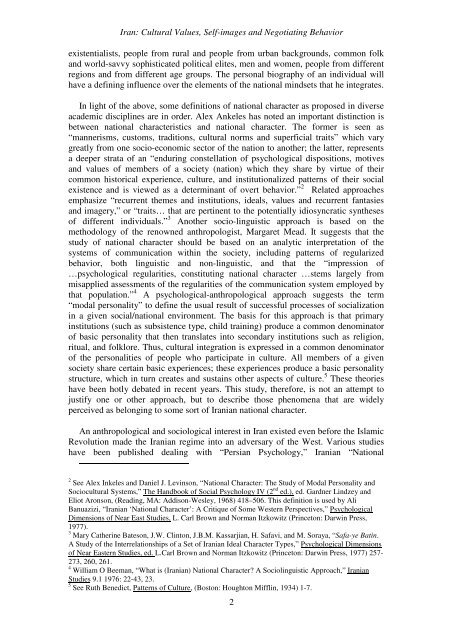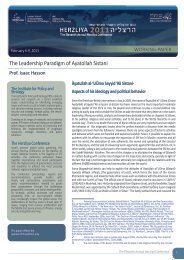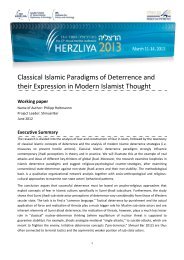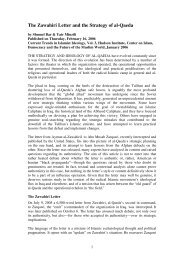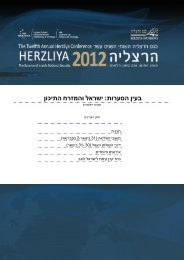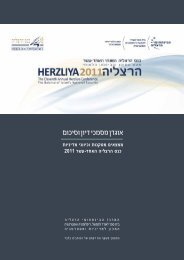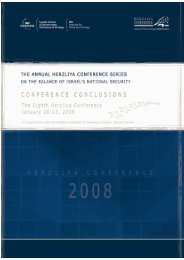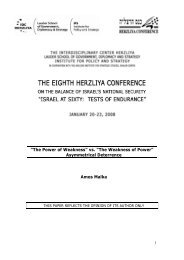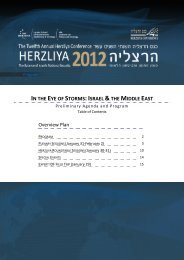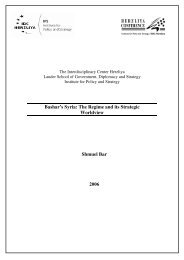Iran: Cultural Values, Self images and Negotiation Behavior
Iran: Cultural Values, Self images and Negotiation Behavior
Iran: Cultural Values, Self images and Negotiation Behavior
You also want an ePaper? Increase the reach of your titles
YUMPU automatically turns print PDFs into web optimized ePapers that Google loves.
<strong>Iran</strong>: <strong>Cultural</strong> <strong>Values</strong>, <strong>Self</strong>-<strong>images</strong> <strong>and</strong> Negotiating <strong>Behavior</strong>existentialists, people from rural <strong>and</strong> people from urban backgrounds, common folk<strong>and</strong> world-savvy sophisticated political elites, men <strong>and</strong> women, people from differentregions <strong>and</strong> from different age groups. The personal biography of an individual willhave a defining influence over the elements of the national mindsets that he integrates.In light of the above, some definitions of national character as proposed in diverseacademic disciplines are in order. Alex Ankeles has noted an important distinction isbetween national characteristics <strong>and</strong> national character. The former is seen as“mannerisms, customs, traditions, cultural norms <strong>and</strong> superficial traits” which varygreatly from one socio-economic sector of the nation to another; the latter, representsa deeper strata of an “enduring constellation of psychological dispositions, motives<strong>and</strong> values of members of a society (nation) which they share by virtue of theircommon historical experience, culture, <strong>and</strong> institutionalized patterns of their socialexistence <strong>and</strong> is viewed as a determinant of overt behavior.” 2 Related approachesemphasize “recurrent themes <strong>and</strong> institutions, ideals, values <strong>and</strong> recurrent fantasies<strong>and</strong> imagery,” or “traits… that are pertinent to the potentially idiosyncratic synthesesof different individuals.” 3 Another socio-linguistic approach is based on themethodology of the renowned anthropologist, Margaret Mead. It suggests that thestudy of national character should be based on an analytic interpretation of thesystems of communication within the society, including patterns of regularizedbehavior, both linguistic <strong>and</strong> non-linguistic, <strong>and</strong> that the “impression of…psychological regularities, constituting national character …stems largely frommisapplied assessments of the regularities of the communication system employed bythat population.” 4 A psychological-anthropological approach suggests the term“modal personality” to define the usual result of successful processes of socializationin a given social/national environment. The basis for this approach is that primaryinstitutions (such as subsistence type, child training) produce a common denominatorof basic personality that then translates into secondary institutions such as religion,ritual, <strong>and</strong> folklore. Thus, cultural integration is expressed in a common denominatorof the personalities of people who participate in culture. All members of a givensociety share certain basic experiences; these experiences produce a basic personalitystructure, which in turn creates <strong>and</strong> sustains other aspects of culture. 5 These theorieshave been hotly debated in recent years. This study, therefore, is not an attempt tojustify one or other approach, but to describe those phenomena that are widelyperceived as belonging to some sort of <strong>Iran</strong>ian national character.An anthropological <strong>and</strong> sociological interest in <strong>Iran</strong> existed even before the IslamicRevolution made the <strong>Iran</strong>ian regime into an adversary of the West. Various studieshave been published dealing with “Persian Psychology,” <strong>Iran</strong>ian “National2 See Alex Inkeles <strong>and</strong> Daniel J. Levinson, “National Character: The Study of Modal Personality <strong>and</strong>Sociocultural Systems,” The H<strong>and</strong>book of Social Psychology IV (2 nd ed.), ed. Gardner Lindzey <strong>and</strong>Eliot Aronson, (Reading, MA: Addison-Wesley, 1968) 418–506. This definition is used by AliBanuazizi, “<strong>Iran</strong>ian ‘National Character’: A Critique of Some Western Perspectives,” PsychologicalDimensions of Near East Studies, L. Carl Brown <strong>and</strong> Norman Itzkowitz (Princeton: Darwin Press,1977).3 Mary Catherine Bateson, J.W. Clinton, J.B.M. Kassarjian, H. Safavi, <strong>and</strong> M. Soraya, “Safa-ye Batin.A Study of the Interrelationships of a Set of <strong>Iran</strong>ian Ideal Character Types,” Psychological Dimensionsof Near Eastern Studies, ed. L.Carl Brown <strong>and</strong> Norman Itzkowitz (Princeton: Darwin Press, 1977) 257-273, 260, 261.4 William O Beeman, “What is (<strong>Iran</strong>ian) National Character? A Sociolinguistic Approach,” <strong>Iran</strong>ianStudies 9.1 1976: 22-43, 23.5 See Ruth Benedict, Patterns of Culture, (Boston: Houghton Mifflin, 1934) 1-7.2


